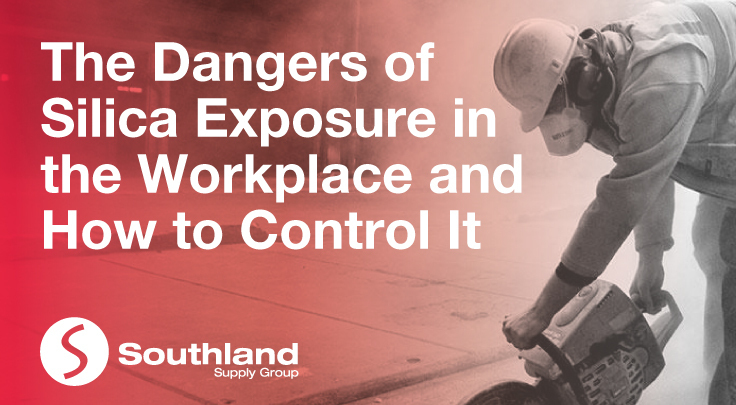
Crystalline silica (silica) is found in sand, stone, concrete and mortar. It is also used to make a variety of products including composite stone used to fabricate kitchen and bathroom benchtops, bricks, tiles, and some plastics.
How are workers exposed to Silica?
Silica is the basic component in sand and rock. It is in construction materials such as:
- Concrete, concrete block, cement, and mortar
- Masonry, tiles, brick, and refractory brick
- Granite, sand, fill dirt, and top soil
- Asphalt-containing rock or stone
- Abrasive used for blasting
Silica is one of the most common hazards on a work site. Any activity that creates dust can expose workers to airborne silica. The most common ways to create silica dust are as follows:
- Chipping, sawing, grinding, hammering, or drilling.
- Crushing, loading, hauling, or dumping
- Building demolition
- Power cutting or dressing stone.
- Facade renovation, including tuck-point work.
- Abrasive or hydro blasting
- Dry sweeping or pressurized air blowing
- Tunneling, excavating, or earth moving
The health risks of Silica Dust
Without proper protection, such as a correctly fitted silica dust respirator kit, it can be easy for workers to inhale silica dust that can cause silicosis, a serious and irreversible lung disease. In addition to that, silica exposure can also cause lung cancer.
It is possible to have silicosis without showing any symptoms at first. The longer workers have been exposed to silica dust, the worse the symptoms will become. As the disease progresses workers may show noticeable symptoms such as shortness of breath, severe coughing and body weakness.
How to reduce the risks
The best way to reduce the risk of exposure to silica dust is by eliminating the source of exposure. If that's not possible, it’s important that workers are equipped with the right silica dust respirator kit.
Managing risks and worker exposures to silica can be achieved by selecting and implementing measures using the hierarchy of controls:
- Silica substitutes – substituting the silica means using a different, safer material in place of the silica-containing substance. In some cases, it may not be possible to use a substitute in place of silica, but for many operations, such as abrasive blasting, there are many possible substitutes.
- Engineering controls - if silica products must be used, OSHA requires engineering controls to be used wherever possible. This type of control involves a mechanical process to eliminate exposure to silica dust.
- Work practices - If workers know about silica and understand the severity of its health hazard, they will be more likely to be able to reduce the chance of exposure.
- Personal protective equipment - Personal protective equipment against silica includes respirators and masks. Having the right protective gear can reduce the chance of exposure.
Remember, always take extra care when working with silica—a little dust now can cause big health problems later. If you need assistance in getting the right protective gear to lessen silica exposure, Southland Supply Group can surely help. Talk to one of our representatives today at 1800 77 22 91 or send us an email at webstore@southland.com.au.
